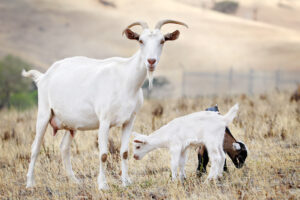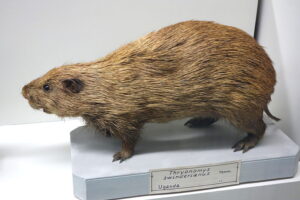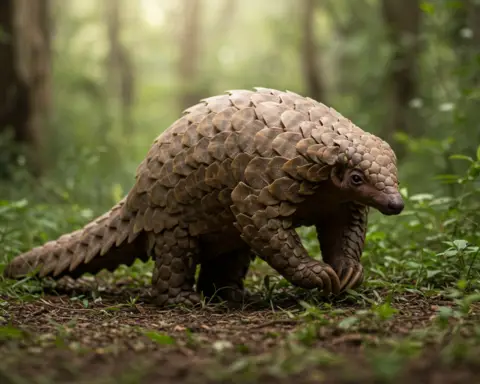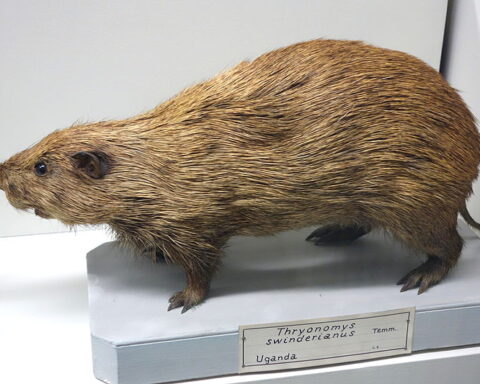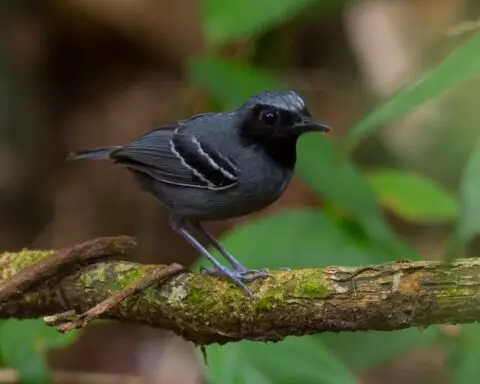Australian Labradoodles tend to be a low-to-medium shedding breed. This means they don’t shed as much as their purebred parents – the Poodle and the Labrador Retriever – but they still will shed some hair.
Many pet parents say one thing they want to do less is chase balls of fur and vacuum after their doodle all day long. If you’re in this boat, we’ve got your back.
In this article, we’ll talk about how much Australian Labradoodles really shed, how to deal with the shedding, and if this doodle is good for folks with allergies.
Why do dogs shed?
Let’s take a step back and look at the dog fur. Dog fur is made of keratin (the protein) and dead skin cells. The fur usually grows from follicles in the dermis or the inner skin layer. These follicles, unlike yours or mine, have several hairs growing out of them.
Generally, the fur controls the dog’s body temperature and protects their skin against environmental factors like extreme weather conditions. When the hair stops growing, shedding becomes as essential for dogs as oxygen for you and me.
The amount of shedding and how frequent it is, though, depends on a couple of factors. These factors include; the dog’s breed, the current health condition, and the season or environment of the dog.
There are other cases where dogs shed less or more because of stress.
Do Australian Labradoodles shed?
Like so many breeds, Australian Labradoodles do shed. As we touched on earlier, they don’t shed as much as their parent dogs but they do shed significantly.
You might also like: How Long Do Golden Retrievers Live
How much do Australian Labradoodles shed?
The amount your Australian Labradoodle sheds will depend on the kind of coat they inherited from their parent dogs.
If the labradoodle’s coat is closer to the Poodle, the doodle might shed less because Poodles tend to be a low-shedding breed. All you need to do is regularly brush to remove built-up fur.
If the labradoodle’s coat is closer to the Labrador Retriever, the doodle might shed more because Labradors tend to be a high-shedding breed. If this sounds like your dog (or potential doodle), you might want to clean up a couple of times.
Aside from this factor, your labradoodle may shed more if;
- It has underlying health conditions
- It is stressed or feeling under the weather
- There’s a change of seasons/weather
- It’s about to give birth to more Labradoodles
With that being said, it’s important to note Labradoodles don’t shed continuously and it happens lightly. This means you won’t get up to see balls of fur rolling down after a petting session with your Labradoodle.
Do Australian Labradoodles lose their puppy coat?
When you bring home your Australian Labradoodle pup, you will notice how light and soft their coat is. This puppy coat is temporary and will give way to a more mature coat anywhere from 6 to 12 months.
Depending on which coat your pup has (or will have), they may lose the puppy coat earlier or later than the above timeline. The shedding will take an average timeline of 1 week or throughout several weeks.
What you can do during this time is to regularly groom especially if your doodle has a curly or wavy coat. This will ensure the fur does not get stuck onto the new coat.
How to deal with Australian Labradoodle shedding
To prevent excessive shedding, there are a couple of things you can do to make your life and your dog’s life easier.
-
Cleaning
How you clean your Labradoodle will be essential to replacing dead fur. For this process, you will need to; brush, comb, wash and give your labradoodle a suitable haircut.
By first brushing your Labradoodle’s fur, you will be extending the time it takes for dead fur to come back. Schedule a time once or twice a week to groom and brush your Labradoodle. Ensure you have a suitable brush as per your breeder’s recommendation for your Labradoodle’s coat.
When it comes to washing, choose a gentle shampoo that will not irritate your doodle’s skin. When it’s haircut time, choose a haircut for your Labradoodle based on the season. If it’s hot, a shorter haircut will serve your Labradoodle well. If it’s cold, a longer haircut will serve your Labradoodle best.
-
Vacuum
Vacuuming your Labradoodle during hot seasons will help in removing all the falling fur and dead skin cells. This will increase the chances of your Labradoodle being shed-free until the next shedding. If your allergies are pretty bad, you can choose to close off a couple of rooms to your Labradoodle.
Are Australian Labradoodles good for allergies?
15 to 30 percent of all Americans are considered to have pet allergies. If you or your loved one falls in this bracket, worry not. Dog allergies are mainly caused by 3 things; saliva, dander, and urine.
These three things share a common link – they have traces of protein. It is these traces that cause an allergic reaction. Because we have diverse dog breeds, there are also diverse types of dander. This is why folks with allergies will have their body react abnormally with certain dog breeds than others.
Since dogs naturally shed, the protein pins itself on the dog fur which then comes into contact with your house or environment. Over time, it triggers your allergies and your body reacts as the protein is in the same environment.
To reduce these chances or help folks who have allergies, hybrids such as Labradoodles are bred to be low shedders with hypoallergenic traits. This means the Labradoodle’s hair and dander are way less and less likely to trigger an allergic reaction.
While there are no 100 percent hypoallergenic dogs, Labradoodles are an ideal choice for anyone with a moderate or severe allergy.
CONCLUSION
An Australian Labradoodle is a great doodle for anyone or a household with allergies. Its low-shedding trait makes it a joy to have especially for folks who don’t want to be tied to their vacuums. For more information about doodle dogs, visit We Love Doodles.

